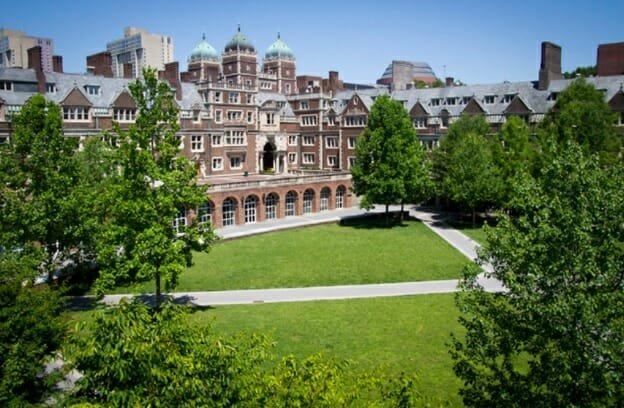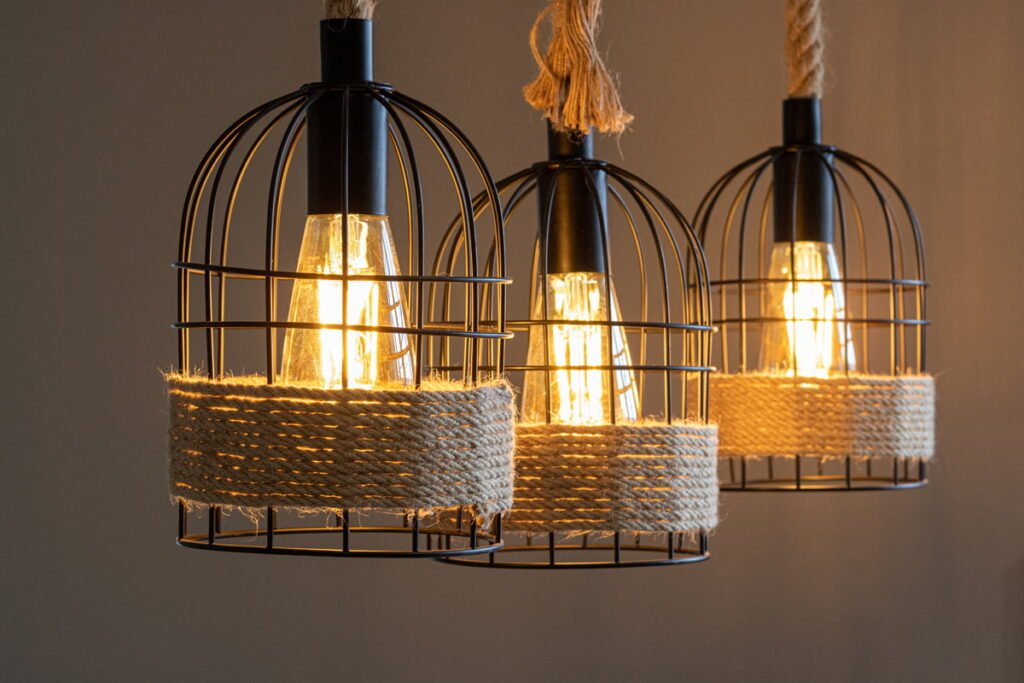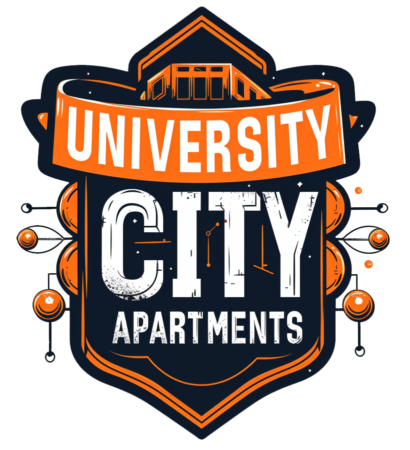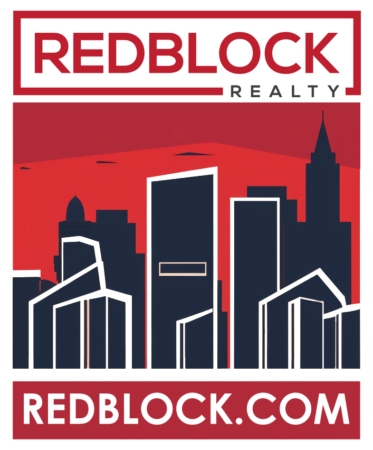Global Headquarters in University City
Amidst the idyllic backdrop of University City and its quaint urban setting, you will find two internationally recognized institutions of higher education: both the University of Pennsylvania and Penn Medicine.
University of Pennsylvania
Located just east of the Schuylkill (skoo-kuhl) River, situated in West Philadelphia is the University of Pennsylvania (UPenn). America’s first university founded in 1740 by Benjamin Franklin, UPenn is a distinct member of the elite Ivy League schools.
It is an institution that has more than lived up to its name, having garnered international recognition for its numerous advancements in business, medicine, and healthcare.
The school was also among the first in the nation to offer programs for professional studies, which have since grown to include Penn Veterinary, Penn Dental, Penn Nursing, and Penn School of Medicine.
Most notably, UPenn’s Wharton School of Business has successfully produced the most billionaire alumni than any other school in America, taking claim to Tesla CEO Elon Musk, Laurene Powell Jobs, and Warren Buffet.
More recently, as a hub for research and development, UPenn and its surrounding area, continues to attract high caliber students, faculty, and workers from around the globe.
Penn Medicine
Penn Medicine in its own right, is too a world-renowned institution rated best in medical research, technology, and science.
Based in University City, Penn Medicine acts as the focal point for numerous hospitals throughout the region, as well as the clinical and research entity of the University of Pennsylvania.
U.S. News & World Report has consistently ranked Hospital of the University of Pennsylvania and Penn Presbyterian Medical Center (HUP/PPMC), both based just steps from the main UPenn campus, as among the best in the country, with 2020 being no exception.
Furthermore, HUP/PPMC have achieved numerous accolades in several specialties including:
- #9 in the U.S. for Ear, Nose and Throat
- #11 in the U.S. for Diabetes and Endocrinology
- #21 in the U.S. for Cancer and Related Research
Regionally, hospitals within Penn Medicine’s umbrella are all recognized for their attainment in the fields of cutting-edge healthcare and scientific research. Within the Philadelphia metro area, HUP & PPMC are ranked #1, Pennsylvania Hospital (PAH) is ranked #4; and Chester County Hospital (CCH) ranked #5.
Overall, the academic rigor and opportunities that abound at both the University of Pennsylvania and Penn Medicine, on its campuses and in its hospitals, have birthed a bustling atmosphere of ambition and achievement that makes living off-campus in University City all the more exciting for students and working professionals.
Why Students Choose to Live Off-Campus
Many UPenn undergraduate and graduate students, prefer to live off-campus, as campus housing is quite limited. Penn residential services manages just 13 college houses designed for both undergraduate and graduate students at a capacity of only 5,500 residents.
This leads the majority of undergraduate students to move off-campus during their third or fourth year. According to a 2017 report, 71 percent of UPenn juniors and 77 percent of UPenn seniors lived off-campus housing.
Luckily though, the close-knit atmosphere of University City and the significant overlap between city environment and traditional college campus combine in a unique way that make living in apartments near UPenn and Penn Medicine a seamless transition for many.
Most Popular UPenn Off-Campus Housing Options
There is a great diversity of off-campus apartments housing options available for UPenn graduate students.
Generally, off campus housing falls within one of the following three categories:
Luxury Residences
At the higher end of the off-campus housing spectrum, there has been a flourishing of luxury apartment buildings around UPenn and Penn Medicine. These buildings are typically newly built, have modern design and décor, and are packed to the brim with amenities such as rooftop decks, game rooms, co-working spaces, and concierges.
While this type of housing stock tends to be the closest to UPenn, steps from the Quadrangle, leasing an apartment will come at a steep price. In many cases more than what you would pay for on-campus housing.
For example, housing at the Chestnut can start around $1,000 per bed.
Additionally, these buildings like these typically require extended leases, such as 13 months, which are inflexible to the average school schedule.
Standard Apartments
The next, and most abundant type of off-campus housing option are standard apartments located within buildings dispersed further out from UPenn campus that were built sometime between the nineties and the 18th century.
Due to the older housing stock of University City, students will encounter a full spectrum of apartments such as those created from the conversion of single-family Victorian homes into student housing, as well as the conversion of historical hotels or micro-apartment structures into housing for student residents.
The majority of these are commonly studio and 1-bedroom spaces and lack luxury amenities, parking, or sufficient light access (which is especially the case for those built in the 1800’s) and will be similar to what you would find in the most well-known buildings, such as Chestnut Hall, the Castle Hill Apartments, the Axis, and the Branden Apartments.
While in locations like these, studio singles can start as low as $1,200 per month, there can some drawbacks.
This particular housing stock is often subject to acute maintenance issues depending on their age and have been known to experience issues with the heater as well as piping.
As many of the companies managing these buildings don’t have large renovation budgets at their disposal, this has in the past been known to lead to serious headaches for residents.
Shared Living Spaces
Lastly shared living spaces have also become an increasingly popular housing option for UPenn students. Within a single-family home, each bedroom will be furnished with the bare essentials such as, a desk, bed, chair and bookshelf. Which is then rented to students for anywhere between $500 to $1000 per month depending on the age of the building.
This housing option can be appealing for graduate students or even medical residents that need to be more economical or perhaps do not expect to spend a lot of time in their room itself.
However, these living situations can be cramped and often require the shared use of bathrooms, laundry facilities, and kitchen areas.
Overall, no matter your preference in terms of location, size, or amenities you will be able to find something within your budget.
Where Do Most Undergraduate Students Live
If you are a graduate student or nursing student whose schedule can not necessarily tolerate the noise and rancor that can come from living in close quarters with undergraduate students, you may be wondering what places to avoid and what locations to flock to.
Because undergraduate students are typically seeking independence while maintaining close proximity to campus, classes and friends, they will more often take residence within the first one to two blocks around the UPenn campus.
Specifically, the greatest concentration of undergraduate students can be found packed between the area bounded by 34th Street to the East, 42nd Street to the West; and Market Street to the North and Walnut Street to the South.
For example, buildings within this perimeter, such as The Radian, The Chestnut, The Axis, Domus, and Hamilton Court all tend to be the modern, luxury residences that attract undergraduate students.

Source: UPenn Free Flickr Photos
Where Do Most Graduate Students Live
Resultingly, UPenn graduate students, medical residents and working professionals, will seek apartment housing outside of these core city blocks.
Specifically, graduate students have been known to flock to areas like Powelton Village, the northernmost reaches of University City known for its greenery, social media worth murals, and more suburban atmosphere. Apartments in Powelton Village will largely consist of your average housing units, located in older buildings, that may or may not have been upgraded with modern designs in the interiors.
West Powelton, the area nestled just west of Powelton Village, is also known to attract graduate students and working professionals due to its unique mix of hipster coffee shops, boutique stores, and more suburban community feel. Its close proximity to Penn Presbyterian Hospital, just mere minutes walking distance, also makes it a huge draw for UPenn medical students and residents desiring to be as close as possible.
The University City Apartments is one of the newest apartment buildings to go up in the area, that offer both modern amenities, without the luxury prices.
As housing in these areas can go quick, graduate students unable to snap up housing in these areas, will expand their search to University City’s other micro-neighborhoods, such as Cedar Park and Spruce Hill. These areas are known to be more bohemian due to the mix of grand historical homes, the greater diversity, and extensive collection of multicultural businesses and restaurants.

Source: Pexels.com
Get an Apartment Near UPenn Today
If you are a graduate student looking for the best value apartments near UPenn, consider the University City Apartments, located just a quick 10-minute walk from Penn Presbyterian Hospital.
The University City Apartments prides itself in offering University of Pennsylvania graduate students, fellows, medical residents, and PhD candidates an intimate community of peace and tranquility that is just a short distance from all the action that University City has to offer.
Consisting of just 19 units, each room within the building is outfitted with modern kitchens, equipped with stainless steel appliances. Bathrooms contain bathtubs for ultimate relaxation, and you can ditch public laundry rooms for the private in unit wash and dryers.
The building additionally offers residents a unique collection of amenities, including a roof deck perfect for yoga and meditation, a study lounge, an elevator, and breakfast bars.
Situated in West Powelton, a haven for artists, creatives, and UPenn academics alike, residents at University City Loft have convenient access to a unique collection of bars, restaurants, and fair-trade coffee shops, immersed withing turn-of-the-century brick buildings and jaw dropping Victorian homes.
At prices starting at $1,300 a month, the University City Apartments are ideal apartments near UPenn and Penn Medicine for those graduate students and working professionals to live in modern luxury without sacrificing their budget.
Book a self-guided tour today by visiting: www.universitycityapartments.com.

Source: www.universitycityapartments.com




